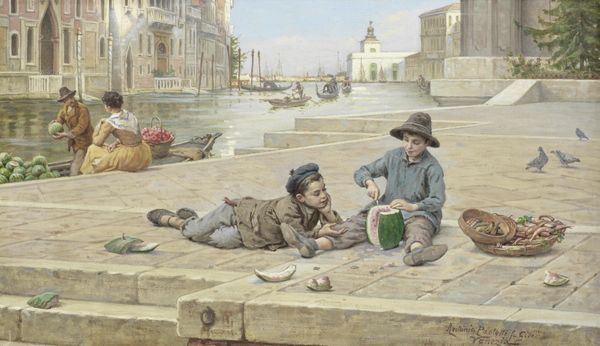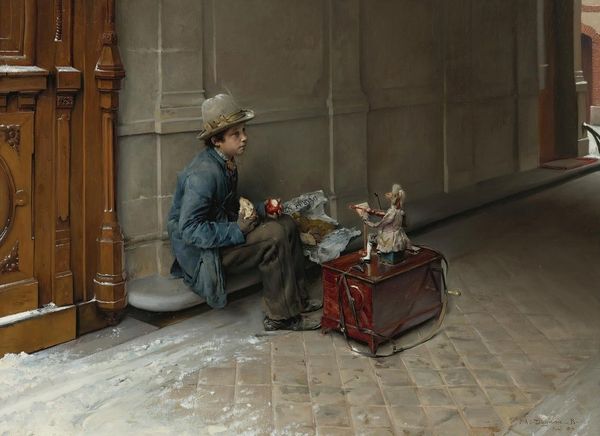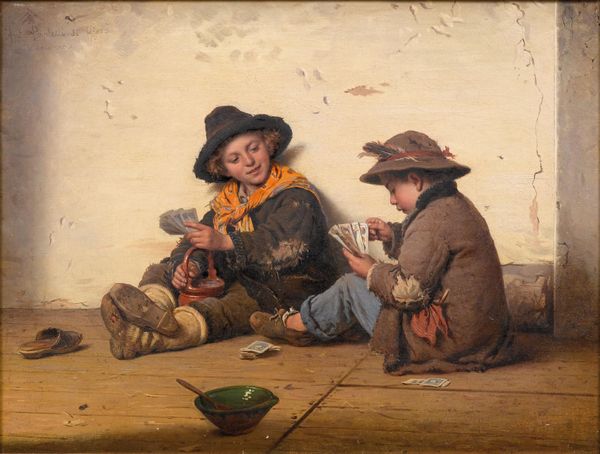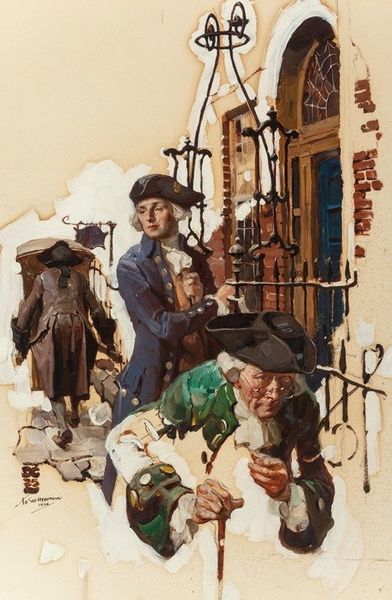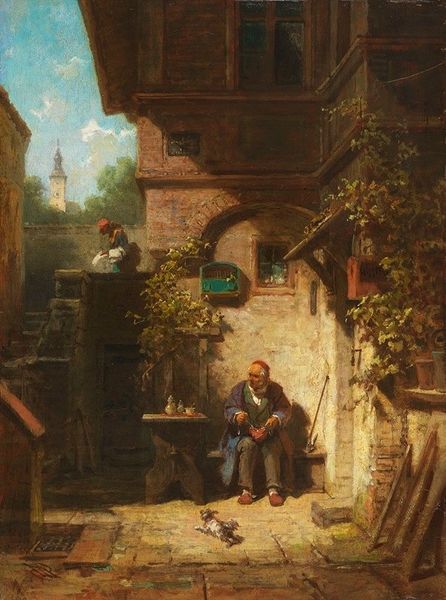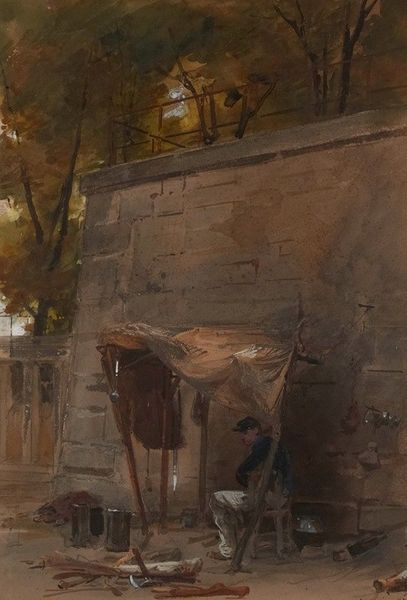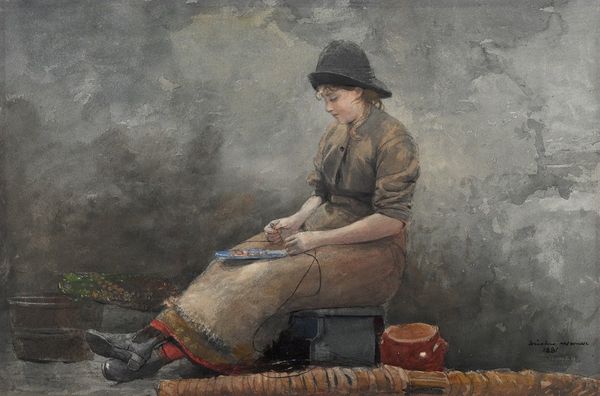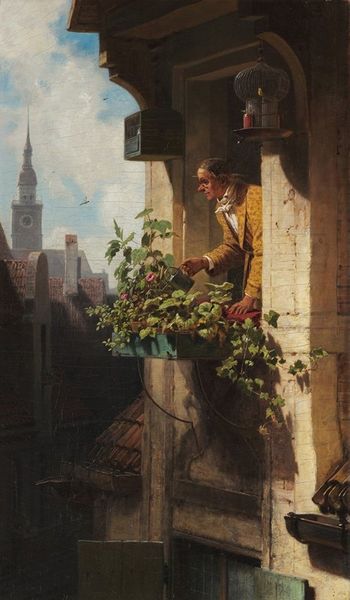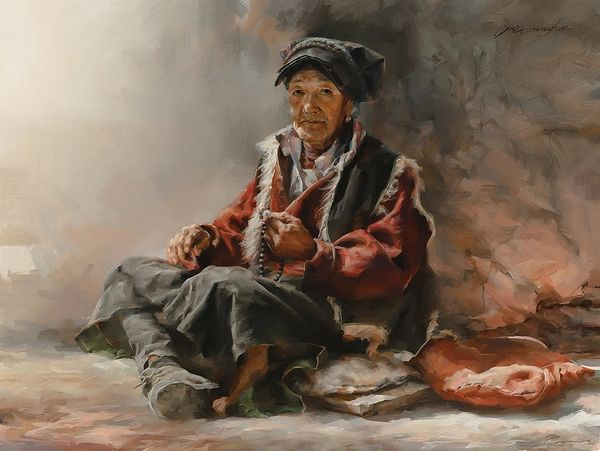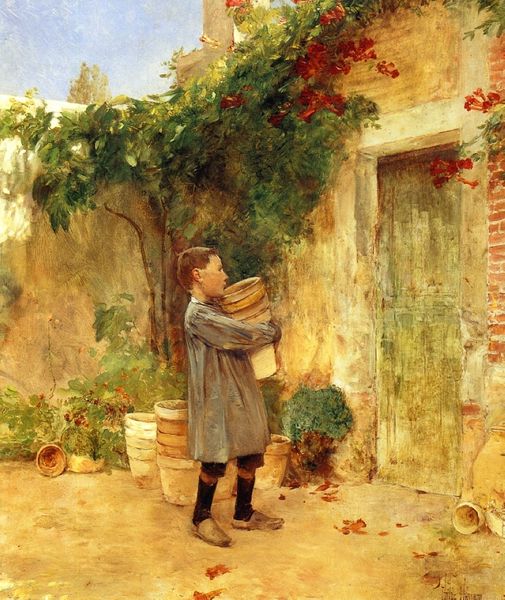
oil-paint
#
portrait
#
oil-paint
#
landscape
#
oil painting
#
genre-painting
#
italian-renaissance
Copyright: Public domain
Curator: This is Antonio Paoletti's, “The Little Orange Seller”, an oil painting that invites us into a sunny Venetian scene. My first impression? There's a melancholy undercurrent to what seems, at first glance, idyllic. Editor: Melancholy, interesting. I'm drawn to how this painting encapsulates aspects of labor and the youthful resilience amidst likely harsh socio-economic conditions of children in Venice, it's a moment frozen within an economic system. Curator: Precisely. Notice how the young seller, perched on the stone, surrounded by his wares—more lie on the ground. We are likely looking at an Italian Renaissance influence here, that may not always sit right today. How the position of the boy might lead the observer to have an understanding on his position in this urban setting. Editor: And this positioning tells us more when contextualizing what was socially expectable. His surroundings almost seem to emphasize a socio-economic stratification that highlights what was acceptable behavior for an upper and lower societal standing. Curator: I completely agree, there is so much here. Let’s reflect on the fact the pigeons add an element of every-day city life, yet somehow underscore this boy's isolation, that creates such a strong statement and really emphasizes what might have happened in this very space for decades. Editor: It creates such an interesting point. I wonder if that melancholy sense comes in fact from our own projection on a boy selling oranges on the street that may or may not have been as bleak as we see it in the early twenty-first century? Curator: Exactly, it brings up our modern-day awareness and really causes the space for necessary questions of societal expectations and limitations. "The Little Orange Seller" provides more than just a scenic glimpse. Editor: Definitely. It's a testament to how paintings can be these critical time-capsules of the intersection between power and perception, while showcasing the need for continuous cultural discussions on labor.
Comments
No comments
Be the first to comment and join the conversation on the ultimate creative platform.
